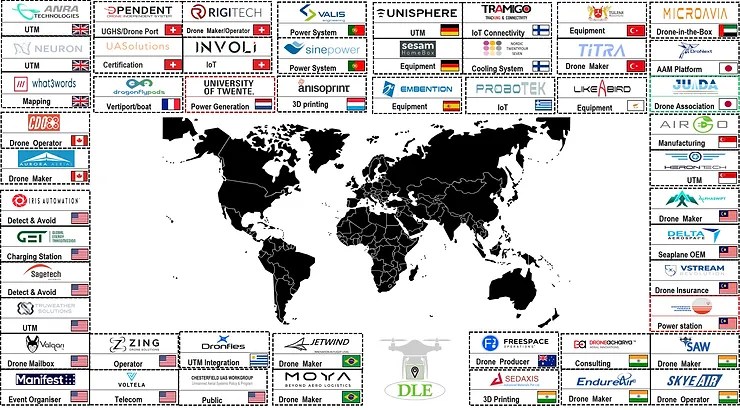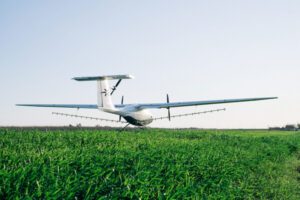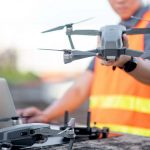Are traditional fishing tools like poles and nets not enough anymore to catch that snapper? Do you want a more innovative way to hook the fish? If so, drone fishing may be perfect for you. You use a remote-controlled drone to scout for a great fishing area and reel in fish or drop the line. Below, we’ll talk about the ins and outs of drone fishing, including how it works, the technology used, and how you can find the right drone, so keep scrolling.
How Drone Fishing Works
As its name suggests, drone fishing involves using a drone for more effective and efficient fishing. Through the high-quality built-in cameras, you get a clear snapshot of the location you’re aiming to fish in. Thus, you can also find the best fishing areas.
To begin, secure the baited fishing line to the drone’s mechanism. Afterward, deploy the drone at a distance you prefer. Usually, it’s around 200 to 300 meters. With the handheld controller, click the mechanism that will release your line and bait to the water. Newer drones can automatically go back to a specific area without any need for control through their return-to-home feature.
Bait Release Mechanisms for Drone Fishing
Drone bait release mechanisms can be mechanical, electronic, or hybrid.
Mechanical
This is the bait release mechanism that you can trust the most. It prevents unnecessary crashes. The hooks are generally made of metal and have a curved scoop design to facilitate ease of capture. After the drone reaches the designated location, it releases the line and turns backward. However, it does not drop the line into the water to avoid being dragged down should a big fish take the bait. This makes the downrigger clips more well-known.
Mechanical bait release mechanisms offer pre-set or adjustable tension. With pre-set tension, you could use a single downrigger clip for determining the strength needed for pulling out the line. Meanwhile, adjustable tension clips could cause overtension. When using an adjustable tension release clip, you should utilize a standard diameter line for a safer option.
Electronic
These drone fishing release mechanisms are common in waterproof drones. O Rings and zip ties are used to attach them to drones. These mechanisms often have a switch too, which is light sensor-activated. You could use the remote control for turning the light on or off. Given that electronic bait release mechanisms need enough battery, they have to be charged every now and then.
Hybrid
Hybrid bait release mechanisms are just a combination of mechanical and electronic bait release mechanisms. They’re convenient to use, but they’re usually pricey. Moreover, their heaviness reduces battery life as well as the maximum weight the drone can carry.
Best Drones for Fishing
A fishing drone is a serious investment, so you’ll want to find one that will satisfy your needs. Here are some factors to consider when choosing a fishing drone.
Battery Life
You won’t want to run out of power while fishing, so a fishing drone with a longer battery life comes in handy. Some batteries can last a maximum of 31 minutes, and it may take up to two hours to keep the batteries fully charged. Hence, you might also want to keep two extra batteries on you.
Camera
To choose the best spot to release bait, you’ll need a high-resolution camera. It will give you a stable and clear view of what’s happening in the surrounding waters, giving you more chances to catch fish. Some drones also include an option to attach your chosen camera to get images of even better quality. The DJI Phantom 4 PRO professional drone is one of the best fishing drones with a high-quality camera. Its speed is fast, and it offers a 30-minute flight time.
Load Capacity
Choose a fishing drone that can carry the baited hooks, drag on the line, release mechanisms, and more, safely and securely. Since the load will exhaust the battery power, make sure to attach only the things you need. You won’t want your fishing drone to suddenly stop and crash.
Range
Before buying a fishing drone, make sure to check its range. Not knowing the range can lead to the loss of connection and the drone itself. Now, drones continue to have a wider range. Some have an incredible range of 10 kilometers. For short-range drones, transmission boosters can help increase the connectivity range.
Swellpro is one of those fishing drone offerings that does not disappoint whether in terms of range, flight time, or speed. It’s easy to use and offers clear footage of what’s underneath, making it great for drone fishing.
Rules on Drone Fishing
Before pursuing underwater drone fishing, you should know the laws and rules of drone fishing in your state. For instance, in 2014, North Carolina banned drone fishing, similar to hunting. In the following years, Michigan and Oregon banned the use of fishing drones.
In Hawaii, lawmakers also recently passed a bill that would ban the use of unmanned aerial vehicles like drones for fishing purposes. According to the bill, the corresponding penalty would be a $10,000 maximum fine and up to one year in jail.
Meanwhile, in Texas, using a drone to help pull in fish that has been hooked is considered unlawful according to the International Game Fish Association. However, drones can be legally used to cast bait and spot fish.
Each state has its own laws and regulations. Some of the most common include drones not being allowed to fly over people, especially in public, and over a federal building. Moreover, the drone’s weight shouldn’t go beyond 55 pounds. The drone must also be within visual range.
Another rule is flying drones above 400 feet is not allowed. Make sure to know state laws first before setting up your drone fishing rig to avoid violations and ensure an enjoyable fishing experience.
Final Thoughts
Drone fishing is indeed an innovative activity that lets you scout for the best fishing spots, drop your bait, and cast it way farther, thus helping you save time, money, and resources. When choosing fishing drones, you should consider factors like battery life, load capacity, and range. Moreover, make sure to adhere to state laws and regulations to avoid unnecessary legal issues and penalties. To learn more about drones, visit our page.





